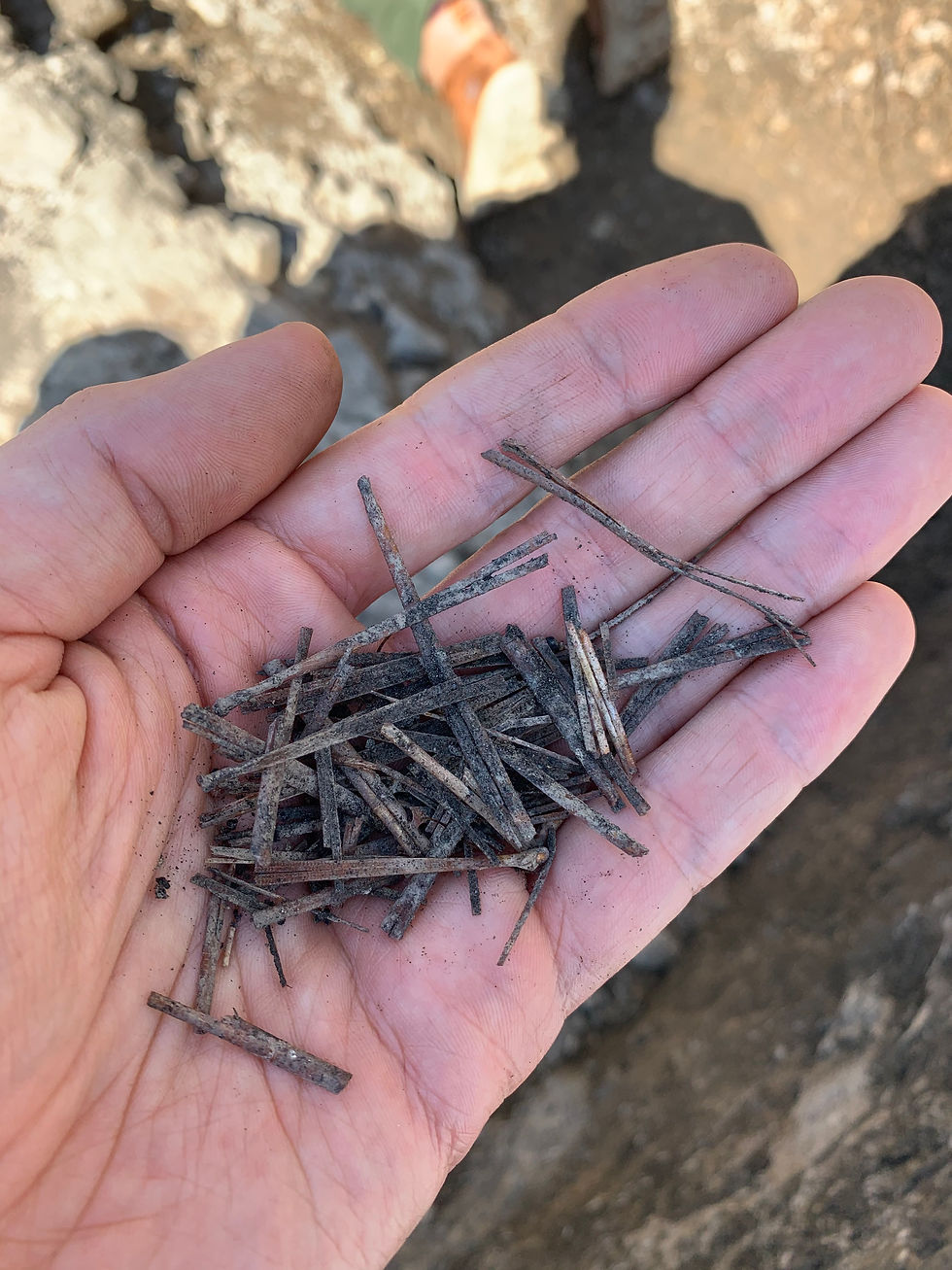2021 - Day 7, Weekly Update
- Caroline Smith
- Jun 3, 2021
- 3 min read
What a difference a week makes! We've had amazing weather, and everyone has been eager and willing to get back on site and dig. We're thrilled with the progress so far, and can't wait to share it with you.
Trench 1: Chapel Trench
In line with all our expectations, this trench is really beginning to look like Bek's chapel. We have located two north-facing buttresses which tell us the northern extent of the building, a corner tower, and one beautifully preserved in-situ column base. Strewn across the site are fragments of masonry, and lots of plaster, some of which is well-preserved and displays evidence of moulding and painting. This all fits with our understanding of how the building was demolished, and we wouldn’t expect to find much in the way of artefacts of occupational deposits. We’ve found a small quantity of animal bone, and a few artefacts, including a copper artefact discovered by Andrew which might have been decoratively attached to a piece of furniture.
(Clockwise - Moulded plaster, remains of tower, carved stonework in rubble, in situ column base, Jackie and Sarah after revealing some carved masonry fragments)
(Left to Right- Broken piece of medieval window tracery, copper artefact, cleaned tower by the end of the week, clean section)
We've just begun to come down to what we think is the floor level, and we are excited to see how this looks as we expand our trenches and uncover more of the medieval chapel floor.
Trench 2: Curtain Wall and Lodging Block building
Like the chapel, we had a good idea of where the walls were situated in this trench because of earlier excavations and geophysics from this area. However, we quickly made some discoveries!
On the first day, the tantalising remains of vaulting springing from the walls told us we were dealing with a basement/undercroft extending south from this building. So far, our excavations show us that this was probably quite extensive, and we’ve even found the steps leading down into it…. We’ve got a lot more work to do to ascertain the date of this structure and its full extent and size. We are also uncertain of its purpose. Ideas floating around include a gatehouse, early lodging block, storage areas and much much more. All we can say for certain is that this building definitely didn’t exist after the c1680, when our earliest illustration of Auckland Castle dates from.
(Left to Right - Vaulting with steps, collapsed vaulting, busy active site, Shauna cleaning a wall)
So far, there have been few finds from this trench, although yesterday John made an exciting discovery of some more whale baleen. Baleen is the substance in the mouths of whales which allow them to filter water for krill and plankton. In 2019 we all got very excited about baleen because it is very rare to find it on an archaeological site. Baleen is composed of collagen which usually doesn’t survive well. However, we know from historical sources that baleen was popularly used for a range of purposes because it is flexible and durable, like plastic. It was used in corsets, to rigidify gauntlets and collars, and to make a range of tools. We think the baleen found in 2019 was probably used in the glassmaking process, as it was found sandwiched between glass fragments.

(Image - Baleen. Photo: John Castling)
At the west end of this trench, we have uncovered many more walls and cuts we are yet to have a comprehensive interpretation of. As we progress further, we hope to uncover more and gain a fuller understanding of this site. Of particular interest are two symmetrical stone walls, with a thinner wall connecting them. We aren't yet sure how to interpret this, but we think it might be a tower which is missing some walls which have been removed through digging later drains, or it could be a medieval entrance. Time will tell - we will keep you posted!
(Left to Right - The two stone 'walls' with connecting wall early in excavation, stratigraphic deposits where baleen was found (they appear to be successive tips), stone walls after some excavation, close-up of stone wall feature)
If you'd like to come and see us on site, then we would love to see you! We have dedicated volunteers to explain the archaeology. You'll see us on the boardwalk, ready and willing to show you what we've found! Otherwise, please do follow us on Twitter and Instagram to get regular updates on our discoveries!







































Comments